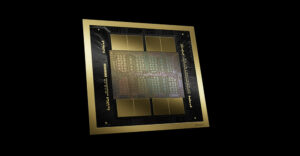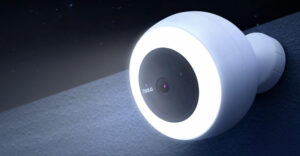
At the Game Developers Conference (GDC) last week, Microsoft raised the bar on what has become one of the more interesting battles in the industry. Actually, it would be more accurate to say Microsoft has taken the gloves off and now — really — is going after the entertainment segment.
The Xbox and MSN groups at Microsoft have been more like independent companies loosely coupled with the parent. A few months ago, MSN was brought back into the fold and made strategic again — so much so that there are rumors suggesting Microsoft may buy AOL from Time Warner. The GDC was the coming-out party for the Xbox group to move through the same process.
While they didn’t actually announce the Xbox 2, I think I have enough to create a reasonably strong idea about what that will be. I’ll end this column with my predictions on this highly anticipated new version of the product.
What is the Xbox?
The Xbox is the closest thing Microsoft makes to an Apple PC. They fully spec it, they designed the interface from scratch to address a targeted audience, and they even defined a unique case to showcase the offering. They, like Sony, also subsidize the hardware, offsetting this cost with game royalties, which is why they can sell a box that costs well over US$200 for less than $200. Much like Apple uses BSD, Microsoft uses an embedded version of Windows to make the platform work.
The Xbox was brought out not to compete with Apple but to compete with Sony, which had taken out Nintendo as the undisputed king of the gaming market. To a large extent, this move was driven by a belief that Sony intended to reposition the PlayStation as a PC and use it to damage Microsoft’s market position.
Microsoft, in responding to a threat that never actually materialized, created a rather good gaming platform that has been steadily bleeding market share from both Sony and Nintendo since its inception. Sony is still dominant but is slipping. Nintendo is all but gone, except on handheld games. And Xbox is a strong number two.
Back to Microsoft’s Core
The industry spends a lot of time describing Microsoft; the most accurate description, in my opinion, is that Microsoft is a company that is expert at tools and platforms. In fact, you may recall that when Microsoft did Java, a platform created by Sun for the nearly sole purpose of killing Microsoft, Microsoft actually made the best tools for it. If there is one thing that few challenge as high competency, it is Microsoft’s capability with regard to tools.
Now, the promise for this Xbox when it first launched was that its similarity to a PC would allow for faster time to market and lower development costs for firms that already had PC-development efforts. While this was generally true, the toolsets the two groups used — for PC and Xbox platforms — were different, which added unneeded cost to the process.
In addition, developers were reinventing the wheel with each game and felt forced to spend a great deal of their time on infrastructure before they could even think about the game itself. This practice resulted in an upside-down model where about 80 percent of the effort and time was spent on the plumbing for a game and just 20 percent on the game itself.
This often meant a game could be as much as 90 percent done before it became clear that it wouldn’t, in fact, work. It typically costs between $5 million and $15 million to develop a game. It’s an incredible risk.
The Microsoft Plan
What Microsoft is doing is blending the tools it provides for both platforms into one toolset, called XNA, then bringing both platforms to parity. This means that regardless of whether you are developing for Windows or the Xbox, you will have access to Microsoft Live capability, the transaction engine (in case you want to charge for some components), voice capability and links between the two platforms. For instance, if you wanted a game that used music off the PC, that would eventually be possible.
In short, you not only have near-identical capabilities to leverage, you also have the ability to work cross-platform, something the warring Vaio and PlayStation 2 folks at Sony simply won’t do.
This plumbing stuff is difficult, and game designers would rather not deal with it. The core argument for Microsoft is that this process should substantially offset the spiraling costs of creating a great game. By creating a common layer of technology to which gamer developers can write, they can shift their budgets and human resources from infrastructure to game development and, in theory, not only build a less-expensive game, but also make it better and get it to market more quickly.
Better, Faster and Less Expensive
Better, faster and less expensive is typically a very strong argument.
The Sony platform, on the other hand, is known to be a bear to develop. Tools are clearly not Sony’s strength. They build great hardware, but game companies are measured on profitability, and Microsoft’s approach appears to play to that need more effectively. Granted, the consumer is the final and most important voter, but if the games are there, the consumer will probably move — or at least that is Microsoft’s bet.
One other thing I haven’t yet mentioned: Accessories will be brought to parity on both platforms as well. We now know why Microsoft killed its PC gaming accessory business. Xbox accessories will work on PCs, and vice versa, both using a common driver and layout specification. No more relearning your hard-earned joystick skills when moving from PC to Xbox.
Microsoft will relaunch its PC game products as cross-platform — if you can call Xbox and Windows cross-platform. Even Logitech should like this change because it will help reduce Logitech’s inventory costs as well.
The Xbox 2 Speculation
I promised to give you my call on Xbox 2. This is only a guess, but with what we know about the new converged platform, I can at least confirm that rumors of Microsoft moving to a G5 chip were just wishful thinking by a few Apple loyalists. The chip will be built by IBM, which also builds for VIA and AMD.
My best guess, given the timing of the product and the new PlayStation 3, is that it will be based on the AMD 64-bit core that IBM helped develop. It will have a hard drive because it needs the performance. And it will continue to have a DVD drive. A burner would compete with the PC and add unneeded cost; a media bay is a remote possibility.
It will run the old games. New 64-bit games — which is where that AMD part is really supposed to shine — will scream on this console. Therefore, it’ll likely run an embedded version of Windows XP 64.
It will have an ATI graphical and sound subsystem and a case that will stack on the shelf better than the current one. The remote control IR receiver probably will be built in, but the remote itself will continue to be an upgrade, and progressive scan for DVDs will finally make it into the product. An accessory family will include 802.11g WiFi, wireless joysticks with voice capability, a video camera and HDMI outputs (along with composite, DVI and VGA).
The Xbox case color likely will remain black, but with a pronounced silver X on the front. We won’t know for some time whether I’m right, and Microsoft isn’t talking. But it does give us something to look forward to.
You’ll need to excuse me now, however. It is time for me to go downstairs into the game room and, once again, get my butt kicked by a couple of 13-year-olds. If you are on XBox Live, my name is Spirit, my nickname is Target.
Rob Enderle, a TechNewsWorld columnist, is the Principal Analyst for the Enderle Group, a consultancy that focuses on personal technology products and trends.






















































I suppose the fact that Jeff Benck, Vice President of IBM’s systems and technology group, has stated plainly that the Xbox will use a Power-based chip is just a delusional dream concocted by crazy apple zealots? Just take a quick trip to cbs marketwatch.com for a Q&A where he says just that. I’m certain it’s not a typo.
You really can’t help yourself but take a snipe at the Mac community and platform at nearly every opportunity (barring a few non-negative reviews) even when you are dead wrong. This article was pure macuser-bashing. It’s unfortunate and unnessary. There’s no reason to put down the power architecture. It’s a great performer. The chips have been hailed by the microprocessor forum (the 970 winning best desktop processor this year). Did you write this on that gaudy ferrari laptop?
Based on retail sell through since launch XBox is number 2 in current generation Consoles with 13.7M sold world wide. With 8.6 in NA they are 2 there, and with 3.7 in Europe they are 2 there as well. They are a distant third in Asia with 1.4M. Trends show Nintendo down (we aren’t counting hand helds which are doing fine). Sony is flat to declining I expect this is due to PS3 anticipation more than anything else.
IDSA changed their name to ESA some time ago, you may be looking at old numbers, though XBox has been #2 for some time.
These development kits have not been confirmed but even the rumors admit they are running x86 emulation which would mean they don’t represent final hardware.
The platform is to use the embedded version of XP (Possibly Longhorn) both are x86 native and for a 4 year platform they can’t afford the perfomance hit emulation would create. .
The Xbox2 will be based on PowerPC. The early Dev Kits run on Mac G5s with a special WinNT kernal.
There’s no reason why MS would make developers use G5 Macs if it wasn’t going to stay PowerPC.
It may not be "the" Apple G5 970 chip, but it certainly will be a Power5 variant.
If the Xbox2 really is going with a x86 processor, then why are the development kits for the Xbox running on Mac G5 with a special Windows NT kernal? It’s obvious the Xbox will be PowerPC based.. maybe not the G5, but some variant.
According to the IDSA sony is still a dominant stable number 1 and MS is in third place by a million or so i think. So Nintendo is still kicking around.
Actually Sony is a dominate number 1, and their marketshare is stable. Microsoft is not a strong second or even a weak second they are third world-wide with about 10 million sold Nintendo has about 11 million sold. In some territories Microsoft and Nintendo trade spots but still world-wide Sony is 1, Nintendo is 2 and Microsoft is 3.Nintendo is actually doing pretty good for having moronic bordering on developementally challenged managment.
I’m not sure how or why any company would have an analyst like the guy who wrote this article as his information is incorrect in such a vital area. Personally I’ve found that most analysts when talking about the software industry seem to have no idea what they are talking about and mostly take the word of companies instead of groups like the idsa, who have all the above information and more.